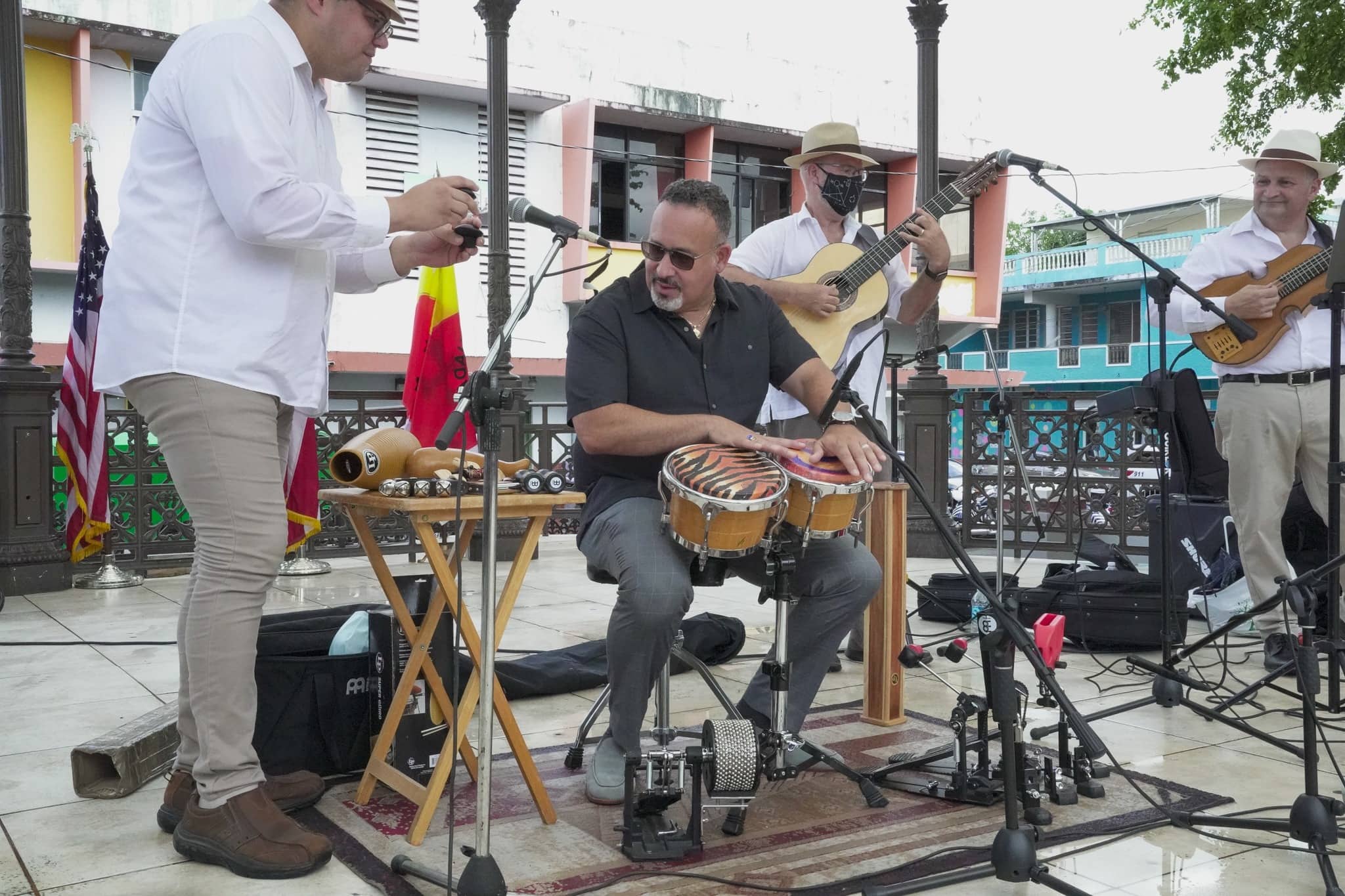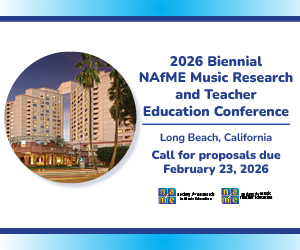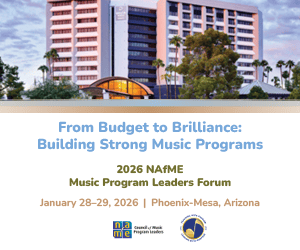NAfME BLOG
Dr. Miguel Cardona: “We Are Underestimating the Power of Music and the Arts”

/ News Posts / Dr. Miguel Cardona: “We Are Underestimating the Power of Music and the Arts”
Dr. Miguel Cardona: “We Are Underestimating the Power of Music and the Arts”
With just a few months on the job, the U.S. Secretary of Education is already putting music and the arts at the forefront of his vision for American schools.
By Carla Kalogeridis
Music educators have a new friend in Washington, DC. Dr. Miguel A. Cardona, sworn in as the 12th Secretary of Education on March 2, 2021, is an impassioned supporter of music and the arts. Cardona grew up in a musical family, and his children are deeply involved in music and theatre in their high school. His overall education philosophy—and strategy for the healing of our nation—includes access to the best music and arts programs for all students across the nation.
In this excerpt from an exclusive interview with Dr. Cardona, he identifies some specific goals for elevating the role of music in education. Look for the complete interview and additional related content in the August 2021 issue of Teaching Music.
NAfME: What is your overall philosophy on education and how music fits in?
Dr. Cardona: Music is a way for students to find themselves and learn critical thinking skills. Often, the systems we have set up are geared toward some academic areas more than others. Sometimes music and the arts are not looked at as part of the primary experience that students should have—it is thought of as an ancillary experience. But music and the arts are a very big part of the education experience for me. In fact, music probably does more to develop critical thinking skills and analytical thinking and improvisation more than many of the other topics we spend time on in school. For me it’s an integral part and one of the best ways we can nurture the natural talent that students have, which might have not been exposed or realized yet.
NAfME: In your worldview, how do music and the arts equate to a well-rounded education?
Dr. Cardona: It goes deeper than just saying that students have an opportunity to nurture their talents or be exposed to something that’s more engaging to them than other parts of school. I visited 16 states and territories over the last four months talking to students. And while their excitement about returning to school has a lot to do with peer interaction, it also is about returning to the extracurricular programs that go into the arts and music and theatre. It’s important to note that music and the arts are the anchor to so many students engaging in school.
“We are underestimating the power of music and the arts to provide what our country needs right now, which is healing.”
But I want to go deeper than that. We are underestimating the power of music and the arts to provide what our country needs right now, which is healing. This country didn’t only just face the pandemic, but also, we’ve had a racial reckoning over the past year. When I started here, I recognized the importance of bringing our country together through education. The divisiveness in our country is something that’s palpable, and we have to address it. I can’t think of anything better than music to bring a community together.
NAfME: What is the Department of Education doing to support music and arts teachers as we emerge from the pandemic?
Dr. Cardona: The American Rescue Plan does provide $1.2 billion through state agencies for summer enrichment programs. Students should be doing and experiencing and engaging with one another. We also provided funds for learning recovery, and that includes music and the arts. Intentionally, when I go to the states, I visit music programs and make it a goal to make sure my social media page and the visits I have include an arts classroom where possible.
For example, I went to New Jersey, and I walked into an orchestra classroom with the governor. They were performing indoors with the appropriate safety equipment and mitigation strategies because that was important to the students. I visited a school in New York where I was greeted by a mariachi band because my staff knows how important music is to me. And then a rock band from the school also performed. It’s about visibility. It’s about ensuring that my messaging encourages music and the arts education—not only after we get everything else done—but as one of the things that we should focus on first, because that is what our students need and that’s what helps build community in our schools.
NAfME: In many urban and rural settings, children are not receiving a quality music education. What is the Department of Education doing to make music education more equitable across the country?
Dr. Cardona: Imagine if we work together in music and the arts to create a campaign similar to what we’ve done over the last 16 months to close the digital divide? It became commonplace for conversations to include efforts to close the digital divide across the country. So why don’t we work together to close the musical divide and ensure that all children have access to instruments and a good quality music program? I think we can do it better now than ever before because what we’ve learned through COVID-19 is that you don’t need to be physically in front of the instructor to learn. We now know how to give students access to educators who have musical backgrounds and expertise. We can expose these students to a quality music education just as other students enjoy across the country.
At the Department of Education, we are going to elevate the role of music in our schools and lift up the best practices of the communities doing it well. Like I’ve done on the tour of the 16 states, we are going to promote the importance of good quality music and the arts education.
NAfME: How does music fit into the development of a well-rounded person? Should American children know about jazz, know how to read music, and learn beyond the traditional Western classic music?
Dr. Cardona: Definitely. I remember having a conversation with the great Herbie Hancock, and we talked about how jazz mirrors life in improvisation and in reading those around you and connecting. And it does more than teach students about music. It teaches them about the world. The arts instruction provides a window into other cultures, and that’s something music can continue to provide for students in our schools.
I take pride in showing my own children how the native instruments of Puerto Rico have their roots in other cultures. The guitars have their roots in Spain. The drums—the bombas that I play—have African roots, and the guiro, which is an instrument that’s commonly played when we play in our band, comes from the Taíno inhabitants of the island where we live. It’s a ghourd that’s turned into an instrument. That right there teaches my children about their ancestry.
How beautiful would it be if our schools and our education program showed how music is a combination of many different cultures, and cultures are an expression of many kinds of music? There’s a lot for our students, not only from a musical perspective but also from a global perspective and in showing them how they fit in as part of a bigger world.
“How beautiful would it be if our schools and our education program showed how music is a combination of many different cultures, and cultures are an expression of many kinds of music?”
When I am asked questions about critical race theory and how that’s become so politicized, I always say that curriculums provide windows into other cultures, mirrors so that students can see themselves, and then sliding glass doors so that students can take a walk into someone else’s culture. That’s what music can do. The terms windows, mirrors, and sliding doors were coined by Dr. Rudine Sims Bishop, who said music is that window into other cultures, and the more that we can use those windows, the more likely it is that we can work together and grow together.
Music heals. It helps us grow and learn together.
About the author:
Carla Kalogeridis is publishing team leader for NAfME’s Teaching Music magazine.
Did this blog spur new ideas for your music program? Share them on Amplify! Interested in reprinting this article? Please review the reprint guidelines.
The National Association for Music Education (NAfME) provides a number of forums for the sharing of information and opinion, including blogs and postings on our website, articles and columns in our magazines and journals, and postings to our Amplify member portal. Unless specifically noted, the views expressed in these media do not necessarily represent the policy or views of the Association, its officers, or its employees.
July 28, 2021. © National Association for Music Education (NAfME.org)
Published Date
July 28, 2021
Category
- Advocacy
- Culture
- Diversity, Equity, Inclusion, and Access (DEIA)
- Music Education Profession
- Representation
Copyright
July 28, 2021. © National Association for Music Education (NAfME.org)




